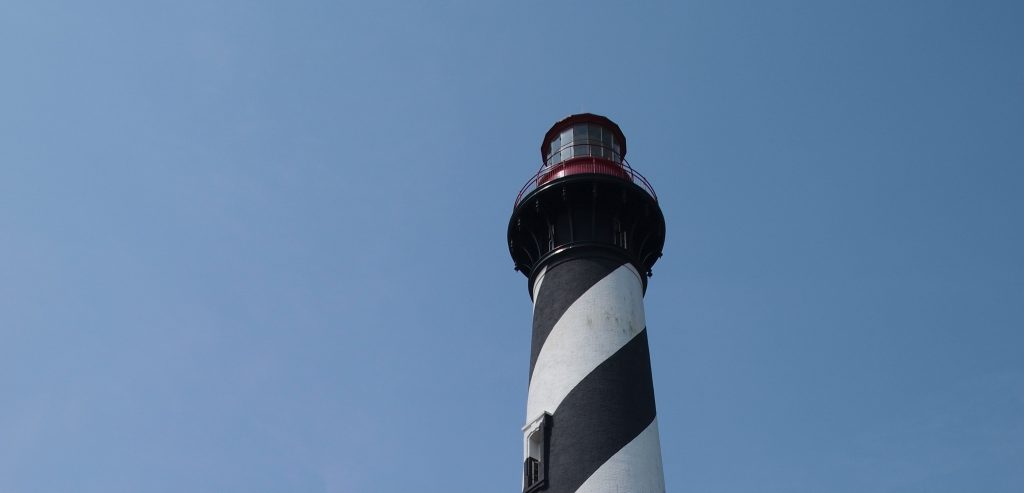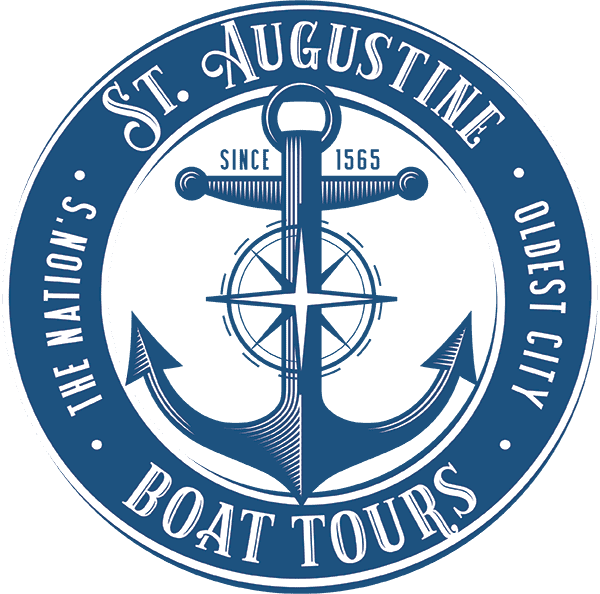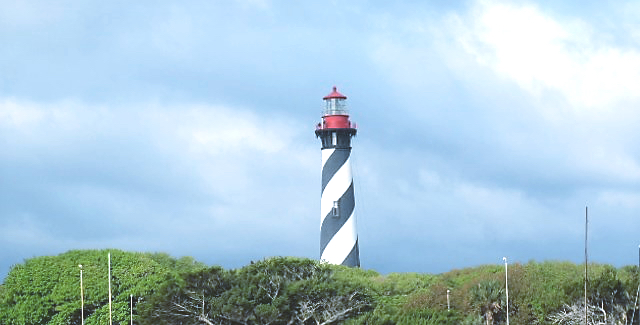When we depart on our daytime tours and evening tours, you can look directly to your right for a clear view of what was a life-saver to mariners of years past: the St. Augustine Lighthouse. For mariners in history, the lighthouse was a lifeline to both safely enter the port and verify their maritime location.
Lighting the Way to the Port
Our historical mariners were accustomed to a lighthouse being very close to a port’s entry way from the ocean. They could avoid the sand bars and shallows that led to groundings and wrecks. However, on your tour, you’ll notice the St. Augustine Lighthouse in front of you but no entry from the ocean. Why? Because the historical inlet is no longer there. (Our mariners-of-years-past would surely be very confused!) The historical entry actually closed up over the years due to storms and the shifting sands of the treacherous coast around the Old City. To view the current inlet, you have to wait until we cruise back north on our tour about ¼ of a mile. This present-day opening to the Atlantic was created with the help of civil engineering back in the 1940s.

Knowing your Maritime Location
Before the current age of GPS and electronic navigation, how did our historical mariners know that they were in St. Augustine? The lighthouse tower itself told them. All lighthouses are unique – each one is painted with a unique pattern on the tower called the “daymark.” Mariners could look at the pattern and then refer to their maritime chart to see which location the pattern matched. Seeing the black and white striping and red top told them they were in St. Augustine.
At night, though, the painted pattern wouldn’t be much use. That’s where the beacon itself came into play – what’s called the “nightmark.” Like the painted tower, the pattern of the beacon on each lighthouse is unique. Mariners knew they were off the coast of St. Augustine by timing the rotation of the beacon, (historically 3 minutes but today set at 30 seconds). Night or day, they knew where they were!
Learning More: a Lighthouse Visit
Now that you know more about the importance of the lighthouse to mariners in years past, you can appreciate the landmark’s significance even more on your tour with us. After your waterside experience, you’ll want to visit the site itself to learn more about this mariner’s treasure.

